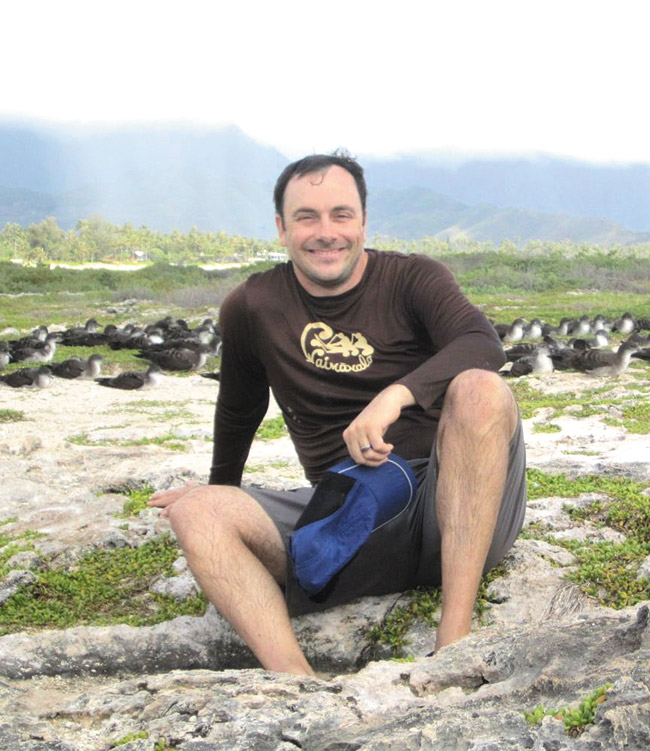David Hyrenbach
In his work as an oceanographer, David Hyrenbach, Ph.D., long has been studying marine animals to find out their habits – and how human activity impacts them.
“My work has been to understand where in the ocean they go using tracking, and then trying to understand how they make a living in the ocean and how that overlaps with possible threats from human activity,” says Hyrenbach, who has been an assistant professor at Hawaii Pacific University since 2008. This, he explains, will help policymakers establish zoning laws in the ocean for fishing, deep-sea mining and other activities.
While conducting tracking research on sea birds, he noticed that many of the animals were eating large amounts of plastic, including bottle caps, toys and lighters.
“The tracking enabled us to see where (the birds) go, and where they are potentially picking up this material,” explains Hyrenbach. “Now we are using the birds to sample the ocean and tell us about plastic distributions on very big scales.”
He has found that seabirds like the black-footed albatross travel huge distances, taking flight paths that span from California to Japan.
“We are trying to understand how the types and the amounts of plastic pollution in the sea change over time,” he explains.
Ultimately he hopes that getting a better sense of plastic pollution at sea will help people deal with garbage more efficiently, mitigate spills and spread awareness in the community. He also hopes that his work will encourage people to think more about how their daily activities affect the ocean and marine animals.
“The really big dilemma is that my actions as a consumer are so disconnected from a bird eating that piece of plastic and choking to death. It is really important that we are able to communicate to people that you could be living far away from the ocean, but through rivers, watersheds, ocean currents and the movement of the birds, you could be impacting birds very, very far away that you would never see,” he says.
In order to raise awareness about the issue, Hyrenbach volunteered to present his research at HPU’s inaugural Science Pub-Hawaii, which took place Sept. 16 at Gordon Biersch in Aloha Tower Marketplace. The event, which will continue monthly, is a showcase of research from leading experts on a range of scientific topics. For updates and more information, visit hpu.edu.
“I think it is really going to allow me to reach a diverse audience of people. I am really excited about that,” Hyrenbach says of the event.
“After all, we are all responsible. We all have the power to be stewards of the ocean,” he adds. “I really want to bring awareness to the beauty of the ocean and the amazing animals that are living around us.”






